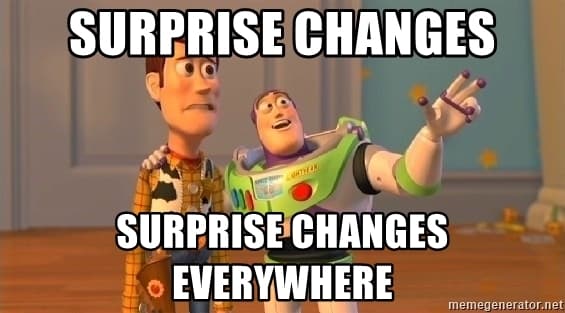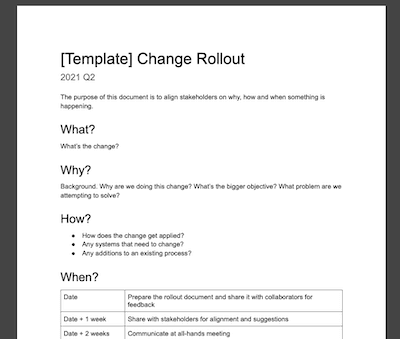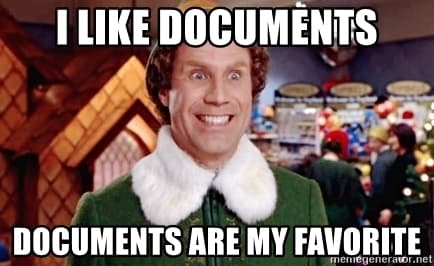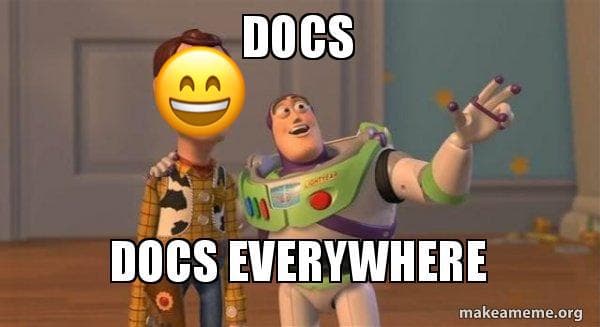How To Communicate And Roll Out Changes: Change Rollout Documents
Management
In the day-to-day of the organization, do you know what we don’t want any of?

That’s right. No surprise organizational changes. Not with responsibilities, not with priorities, not with processes, and not with team structures.
Surprise changes lead to uncertainty. Uncertainty leads to anxiety. Anxiety leads to fear. And fear leads to… the dark side of the force, obviously.

But organizational change is necessary, both planned and unexpected. And as managers, we can’t control all changes happening in the team or around the organization. But sometimes, despite our best intentions, we managers are responsible for creating even more uncertainty by changing things around on a whim.
How can we roll out both planned and unexpected changes in the least surprising way possible? How can we avoid triggering fear and anxiety? And very important: how can we reduce the risk of needing to spend time containing the damage caused by a poorly handled change?
Here comes my favorite artifact of 2021, the Change Rollout Document. To use it:
Duplicate the change rollout document template.
Fill it out.
Follow your timeline, adjusting as necessary along the way based on the feedback received.

When you make one, share it with your stakeholders. Let people digest the impact of the change, think through their concerns, and asynchronously communicate their feedback. Optionally, a meeting is useful when there are important concerns or open questions that need more bandwidth to be discussed effectively.
Writing change rollout documents is a fantastic way for leaders to collaborate. At Splash, Charlie Irwin and I are producing 2-4 small changes per month to enable better quality outcomes and reduce friction points. We build the documents together, asynchronously, and each of us performs different steps of the timeline.
Both Charlie and I have learned from experience the importance of this process. The time we don’t invest upfront in writing the change rollout document comes back later multiplied as effort to align individuals, fix broken trust, and do damage control.

Quick unplanned changes can be necessary. The circumstances may require that. But urgency doesn’t justify lack of preparation. Same as we don’t make code changes in our production environment without peer review or continuous integration tests, we shouldn’t apply organizational changes without change rollout documents.
–
Here’s a filled out example of a change rollout document: https://docs.google.com/document/d/1j_tegVZjvErE_KgcqL1OBzy4SObK-gFWv-olx3obApk/preview

The template: https://docs.google.com/document/d/1Yq-gFbKIXfE7JQuDUlO0SSHS7dGqabq0aPTVOojDROU/template/preview
